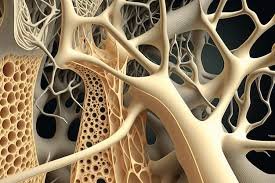Staying strong after 40 is not optional—it’s essential. Start with what you can do, build a routine, and never ignore pain or stiffness.

ARTHROSCOPY–Arthroscopy is a minimally invasive surgical technique used to diagnose and treat joint problems. A
small camera (arthroscope) and specialized instruments are inserted through small incisions to view, diagnose, and
treat the joint.
The word "arthroscopy" comes from the Greek words "arthro" (joint) and
"skopein" (to look).
It's widely used for examining and treating issues in joints like the knee, shoulder, hip, elbow,
wrist, and ankle.
Provides a clear view of the joint without the need for large incisions, resulting in faster recovery and
minimal scarring.
When imaging (e.g., X-rays, MRI, CT scans) does not provide a conclusive diagnosis.
Persistent joint pain, swelling, or stiffness with unclear cause.
Meniscus tears.
Ligament injuries (e.g., ACL reconstruction).
Cartilage damage (microfracture or chondroplasty).
Removal of loose bodies or bone spurs.
Synovitis.
Rotator cuff tears.
Shoulder impingement syndrome.
Labral tears (e.g., SLAP lesions or Bankart lesions in shoulder dislocations).
Frozen shoulder (adhesive capsulitis).
Femoroacetabular impingement (FAI).
Labral tears.
Removal of loose bodies.
Tendon or ligament repair.
Removal of loose bodies or bone spurs.
Joint instability.
Debridement of damaged cartilage.
Diagnostic evaluation to assess the severity.
Performed under general, spinal, or local anesthesia.
The area around the joint is cleaned and sterilized.
Small incisions (portals) are made near the joint.
An arthroscope with a camera is inserted into one portal, and surgical instruments through others.
Saline or sterile fluid is used to distend the joint for better visibility.
Surgeons inspect the joint and perform necessary repairs or removals.
Portals are closed with sutures or adhesive strips, and a dressing is applied.
Minimally Invasive: Smaller incisions, less pain, and reduced scarring.
Quick Recovery: Faster return to normal activities compared to open surgery.
High Precision: Direct visualization of the joint for accurate treatment.
Lower Risk: Reduced chance of infection and complications.
Most patients are discharged the same day (outpatient surgery).
Recovery time depends on the joint and the type of repair (e.g., knee arthroscopy recovery may take 4–6 weeks,
while ligament reconstruction takes longer).
Physical therapy is essential to restore strength, range of motion, and joint stability.
Exercises are tailored to the specific joint and procedure.
Over-the-counter pain relievers (e.g., acetaminophen, NSAIDs).
Ice application to reduce swelling.
Avoid strenuous activities and follow your surgeon’s guidance for a gradual return to normal activities.
Infection (rare due to small incisions).
Bleeding or swelling in the joint.
Blood clots (DVT).
Damage to surrounding nerves or blood vessels.



Copyright © 20November 10, 2024 Dr. kanav's Joint Wellness Clinic . All Right Reserved